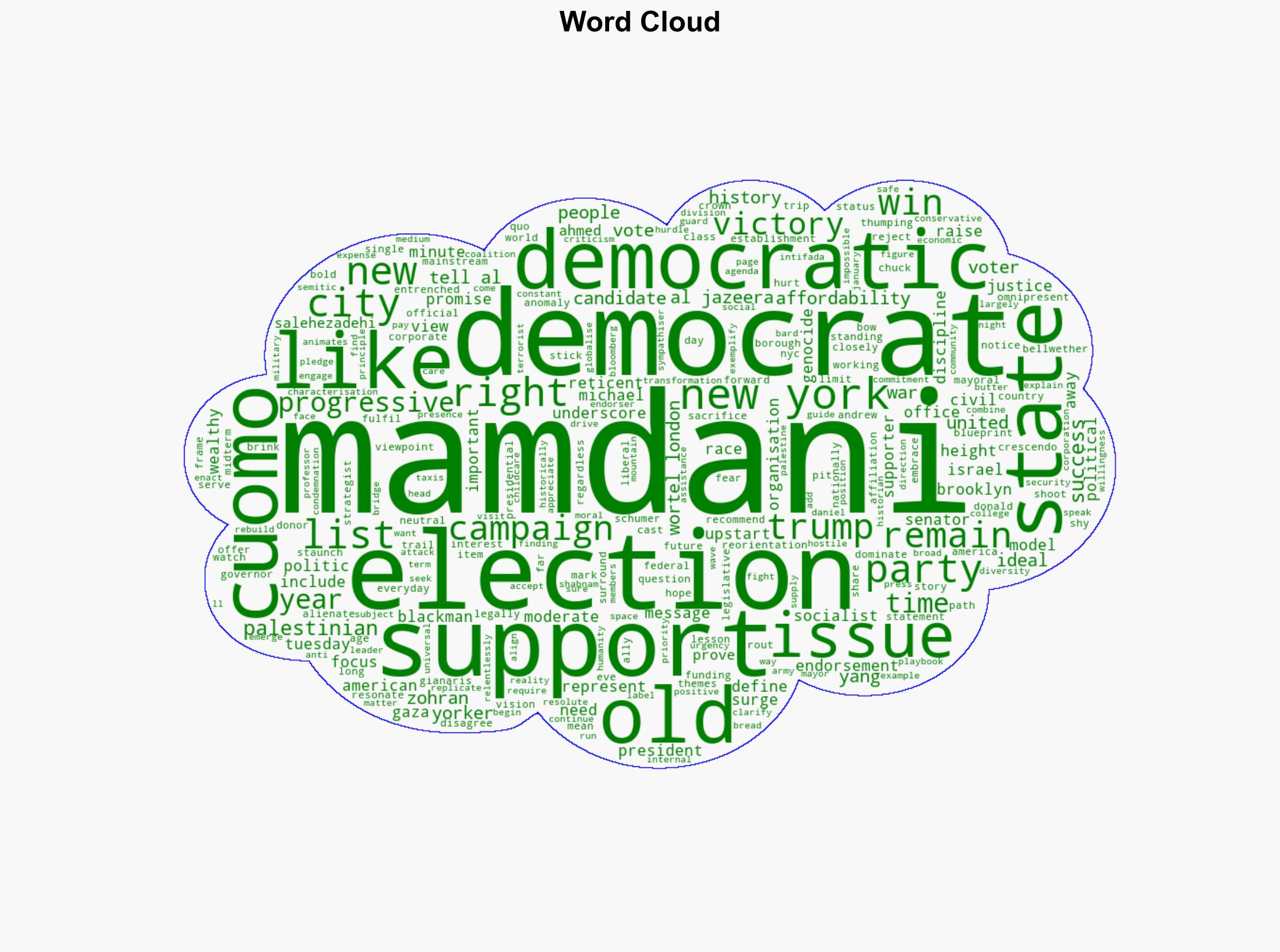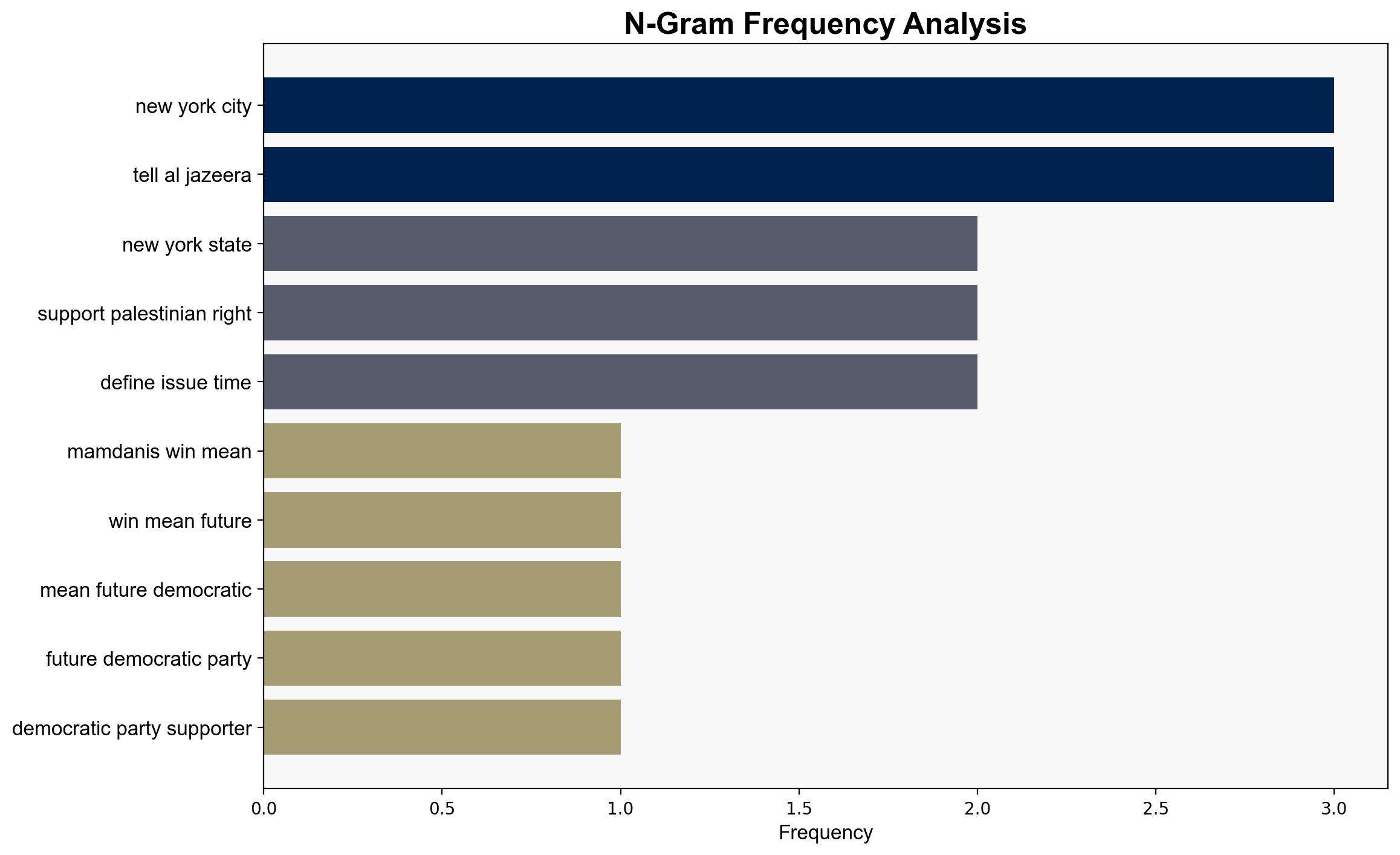What does Mamdanis win mean for the future of the Democratic Party – Al Jazeera English
Published on: 2025-11-05
Intelligence Report: What does Mamdanis win mean for the future of the Democratic Party – Al Jazeera English
1. BLUF (Bottom Line Up Front)
Mamdanis’ victory signals a potential shift towards progressive policies within the Democratic Party, challenging the traditional moderate stance. The most supported hypothesis suggests that this win could catalyze a broader movement towards progressive ideals, though internal party divisions may pose significant challenges. Confidence level: Moderate. Recommended action: Monitor emerging progressive campaigns and assess their impact on party dynamics.
2. Competing Hypotheses
1. **Hypothesis A**: Mamdanis’ win represents a broader shift towards progressive policies within the Democratic Party, potentially leading to a reorientation of party priorities and strategies nationwide.
– **Supporting Evidence**: Mamdanis’ campaign focused on progressive issues like economic security and social justice, resonating with voters disillusioned by the status quo.
– **Contradictory Evidence**: The Democratic Party’s historical success has often relied on moderate policies, suggesting resistance to a full-scale progressive shift.
2. **Hypothesis B**: Mamdanis’ victory is an isolated event, unlikely to significantly alter the Democratic Party’s overall direction, which will continue to be dominated by moderate influences.
– **Supporting Evidence**: Key figures like Chuck Schumer remained neutral, indicating a lack of widespread endorsement for progressive candidates.
– **Contradictory Evidence**: The success of Mamdanis and similar candidates may inspire more progressive campaigns, challenging the moderate establishment.
3. Key Assumptions and Red Flags
– **Assumptions**: Hypothesis A assumes a growing voter base for progressive policies, while Hypothesis B assumes the resilience of moderate influence within the party.
– **Red Flags**: The potential for internal conflict within the Democratic Party as progressive and moderate factions vie for influence. The role of external endorsements and media portrayal could skew perceptions.
– **Blind Spots**: The impact of external political and economic factors on voter priorities and party strategies.
4. Implications and Strategic Risks
– **Implications**: A shift towards progressive policies could redefine the Democratic Party’s platform, affecting national elections and policy-making.
– **Strategic Risks**: Internal divisions could weaken the party’s cohesion, impacting its ability to effectively challenge opposition parties. The risk of alienating moderate voters remains significant.
– **Cascading Threats**: Potential for increased polarization within the party, leading to fragmented voter bases and reduced electoral success.
5. Recommendations and Outlook
- Monitor the development of progressive campaigns and their influence on party dynamics.
- Facilitate dialogue between progressive and moderate factions to mitigate internal divisions.
- Scenario Projections:
- Best: Successful integration of progressive policies leads to increased voter engagement and electoral success.
- Worst: Deepening divisions result in electoral losses and weakened party influence.
- Most Likely: Gradual incorporation of progressive ideals with ongoing internal negotiations.
6. Key Individuals and Entities
– Zohran Mamdani
– Andrew Cuomo
– Chuck Schumer
– Michael Gianaris
– Justice Democrats
7. Thematic Tags
political strategy, party dynamics, progressive movement, electoral influence





